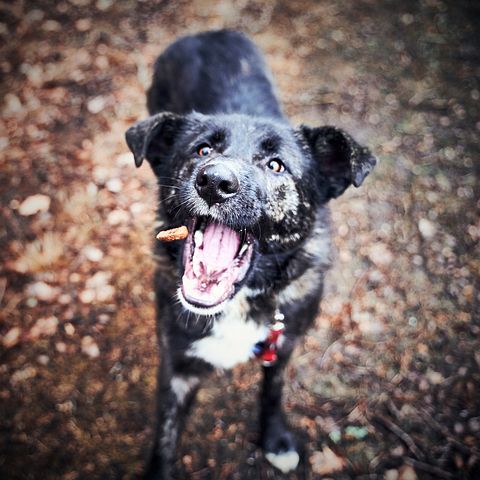Pet Food Math?
All you ever wanted to know about your pet food label in numbers
How much do I feed my pet?
Part 5
I’m sure you have seen many calculators or guides online or on pet food packages that tell you how much you should feed your dog. I can assure you that 99% of them will tell you to feed too much food. I’m allowing 1% because I know there are some good companies out there trying their best and have truly put a lot of effort into getting this right. Why would they tell you to feed too much? I’m sure you have already figured out the more you feed, the more often you purchase, the more money they make. More sales, more profits!
I showed you the chart below in Part 2. Generally, I think that most pets’ foods recommend about 20% food than most dogs need calorically. On top of that, doing the math on the Guaranteed Analysis often shows that there is a 20+% discrepancy between their stated calories and actual calories. Additionally, there is no package label that can consider your pets age, activity level, spay/neuter status, and current body composition then make adjustments for those things to fit your pets needs.
So how do you figure out how much you should feed your pet? We are here to help you with just that. If you use the tips below, you should be feeding your pet an appropriate amount of food.
Don’t forget that the number of calories in 1 cup of the food you purchase should be listed just underneath the Guaranteed Analysis.
Step #1: Base calories
The majority of pets will start in this range:
1 – 50lbs (and Cats) 200 calories per 10 pounds of body weight
= (pets weight) x 20 ….…. e.g. 38lbs x 20 = 760kcals/day
51-75lbs 175 calories per 10 pounds of body weight
= (dogs weight) x 17.5 … e.g. 69lbs x 17.5 = 1,207.5kcals/day
76 – 110lbs 150 calories per 10 pounds of body weight
= (dogs weight) x 15 …… e.g. 94lbs x 15 = 1,410kcals/day
111lbs + 100 calories per 10 pounds of body weight
= (dogs weight) x 10 ……e.g. 124lbs x 10 = 1,240kcals/day
There are also additional factors to consider when calculating calories for your pet.
Step #2: Factor in your pet’s age
How old is your pet?
- Puppies under 14 months of age need about 25% more calories per 10lbs of body weight than an adult.
- A senior (any pet that is over 75% of their expected lifespan) needs about 15% fewer calories per 10lbs of body weight than an adult.
Step #3: Factor in your pet’s reproductive status
Is your pet spayed or neutered? Pets that are fixed have lower metabolisms.
- A pet that is not spayed or neutered usually needs about 15% more calories than a pet that is fixed.
Step #4: Factor in your pet’s current body composition
Does your pet need to gain or lose weight? Just like with humans, increased or decreased caloric intake will alter body composition.
- Increasing or decreasing caloric intake by 10% can help your pet gain or lose weight.
Step #5: Factor in your pet’s activity level
Is your pet active? The more exercise your pet gets, the more calories they need, and vice versa.
- An inactive pet (<30 minutes of activity/day) should have their caloric intake decreased 10% from the average dog (30-90 minutes of activity/day).
- An active dog (>90 minutes of activity/day) needs a 10% increase in calories.
- An extremely active dog (>2 hours of activity/day) needs an increase in 25% in calories per day.
Of course, there are exceptions to every rule and not everyone fits into an “average.” If your pets’ caloric needs seem vastly different than the average, it may indicate a medical problem. Feel free to reach out to us or your local vet (if your vet understands caloric intake math. If they don’t you may just ask them about your pets thyroid health, PLE or EPI).
Here is an example for you.
Harley is a 22lb terrier. This is a good weight for Harley.
22 (lbs) x 200 kcals/10lbs/day = 440kcals/day base
She is 9 years old (small dogs live up to 20 years old, so she’s not a senior yet).
No caloric adjustment necessary
She is not particularly active. She goes to the dog park once a week to chase her frisbee.
Reduce the caloric base by 10% because she classifies as sedentary. 440 x 0.9 (90% of the total) = 396kcals/day
She is spayed.
No caloric adjustment is necessary because this is the standard.
Harley needs 396kcals/day.
We hope this helps you with calculating the right amount of calories for your pet. Please also note that feeding too many calories can cause your pet to have soft stool or diarrhea. Be sure to monitor this.
Click “Next Post” for Part 6
How much should I feed my pet?
